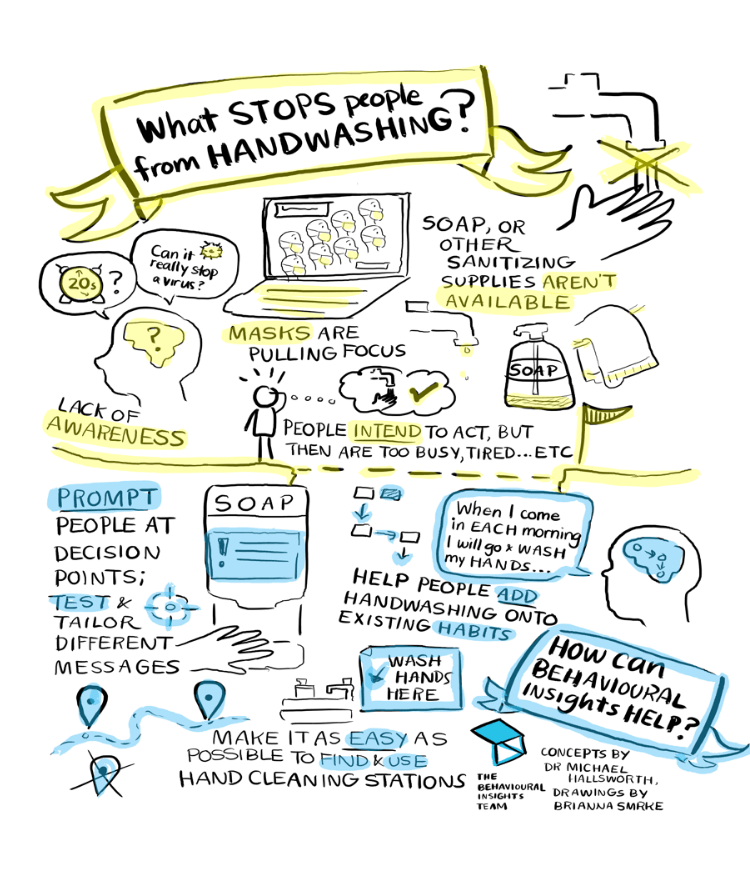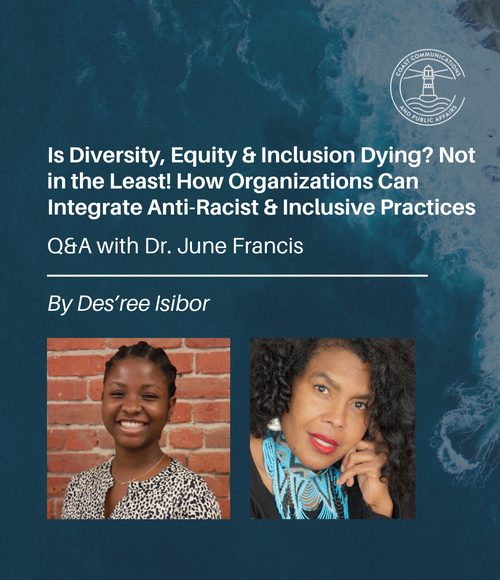During the COVID-19 pandemic, communicators have been front-and-centre in developing strategies and tools that have helped save lives.
But has it had the impact we’ve needed?
When we build communications programs and materials to influence hearts, minds and behaviours, there are learnings from other disciplines that can be implemented to improve our outcomes and, hopefully, our impact as well.
Take behavioral economics and psychology, as two examples.
The work of Nobel Prize-winning behavioural scientist Dr. Richard Thaler and the UK’s Behavioural Insights Team (which Dr. Thaler helped to create) helps us see how we can use behaviour analysis to inspire small changes (“nudges”) that lead to big results or, alternately, to improve outcomes when they are not optimal. A good example of this can be found in a study conducted by the Behavioural Insights Team in Bangladesh. Handwashing stations were installed at 1,000 locations around the country, with handwashing posters put up at the sinks to encourage proper technique. The study found that when handwashing posters contained a lot of information (often in service of “making it accurate”) people were overwhelmed, confused and didn’t do as good of a job at the task. The group has also extensively studied what types of posters work best, using online testing to confirm and further refine approaches. Clear and concise. Visuals. Limited text. Nothing surprising here, but important to understand when we are instructing graphics teams.
Although we often start with the right idea in designing communications materials in a crisis (and in normal situations), by the time we get through approvals and budget discussions, something different than we envisioned comes out the other side. Or, we get pulled into directions set out by those with “opinions” versus data-driven advice. Think of the posters we’ve seen during the pandemic where the carefully-considered design and key messages are overtaken by the all the logos of contributing organizations, undermining the efficacy of the tool.
An insight we can gain from psychology is how adding more facts can (or cannot) change beliefs. Although often overstated in terms of its impacts, there is still value in understanding how the backfire effect functions in when we are designing campaigns to impact behavior and opinion. Scientists at the Brain and Creativity Institute at the University of Southern California studied what happens when people’s brains were examined in a MRI as they were provided facts that contradicted a values-based belief, specifically political beliefs. Can facts about gun control change a person’s views about gun control?
It turns out it is challenging to change people’s minds when the topic is both controversial and values-based versus simply fact-based—something communications professionals and the internal and external clients we serve forget. The brains of the test subjects lit up like they were being chased by a bear. It was the amygdala that specifically activated—they went into fight or flight response. But they did NOT necessarily change their opinion. “That is consistent with the idea that when we feel threatened, anxious or emotional, then we are less likely to change our minds,” as Jonas Kaplan, lead researcher said.
Applications for crisis and corporate communications
Every organization wants to spend time designing its own collateral, social media posts, etc. It’s the logo game, in part (i.e. be seen to be doing the work). But what organizations don’t seem to spend much time on, even during a crisis like the pandemic, is real communications data collection, measurement and evaluation. This is yet another lesson we can learn from other disciplines.
Fight for the budgets to test your outcomes so you can improve and be more strategic about how you communicate. Ideally this is an ongoing cycle (strategize, implement, measure, revisit strategy, adjust implementation, repeat) leading towards the best possible outcomes. Don’t wait until the budget runs out to the audit the program and adjust – by then it’s too late to implement change.
Rather than wait until this pandemic crisis (or any crisis – a marine incident, a threat to your corporate reputation) is over to check in and make improvements, now is the time for communications experts to stop and ask the tough questions, even taking cues from other disciplines where data and testing is inherent in their practice.
Some great resources:
Click here for more information on our issues management, crisis communications planning, advice and support.



